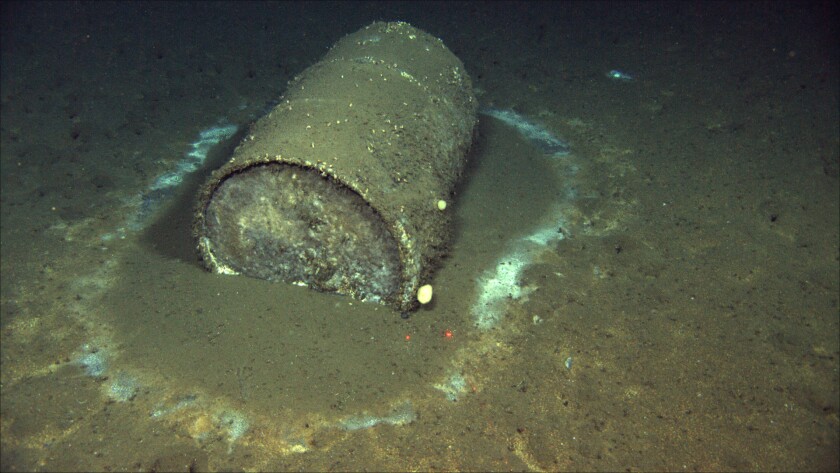“When we look at what is truly sustainable, the only real model that has worked over long periods of time is the natural world.”
— Biomimicry Institute founder, Janine Benyus
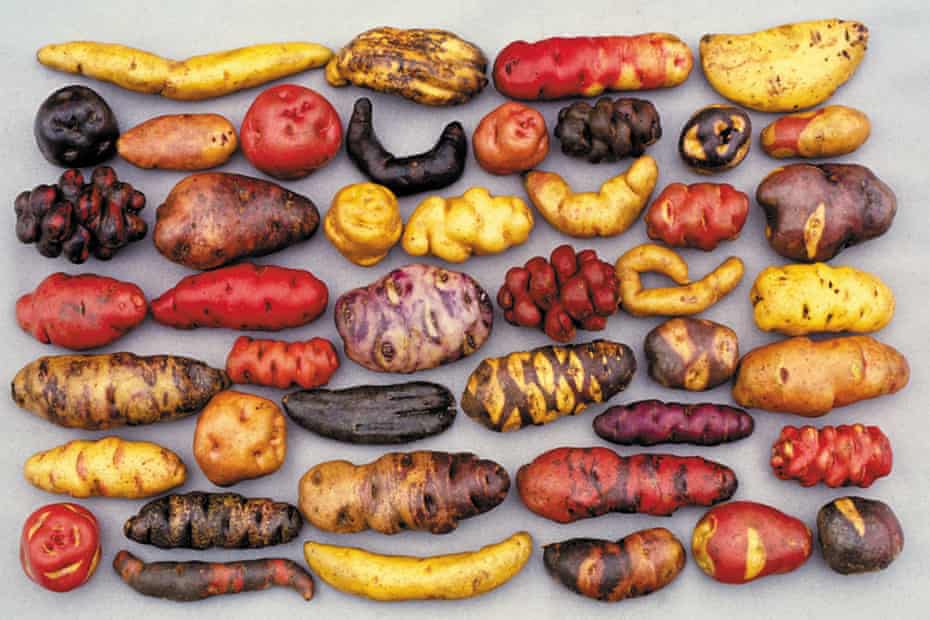
[Photo: A selection of the thousands of native potato varieties that grow in Peru. Photograph: The International Potato Centre]
It’s paramount to talk about all the untested, all the never-experimented-on synergistic affects of all those “compounds/ingredients/chemicals” the chemical industry has forced upon the public and nature through “better living/eating/drinking through chemistry.”
I was just talking with a 78-year-old woman whose father’s side of the family (56) all were murdered in Germany’s death camps. She grew up in Chile, and alas, ended up Oregon. She is working on stopping the aerial spraying of 2-4-D and other weedicides onto the clear-cuts.
She remarked at how insane the world is with so much lack of common sense and connecting of the dots when it comes to our factory/industrial food systems. She held up a potato:
How did it ever become normal to use poisons on our food? Poisons that have a direct vector not just to your gut and mine. But to the developing guts and brains of fetuses?
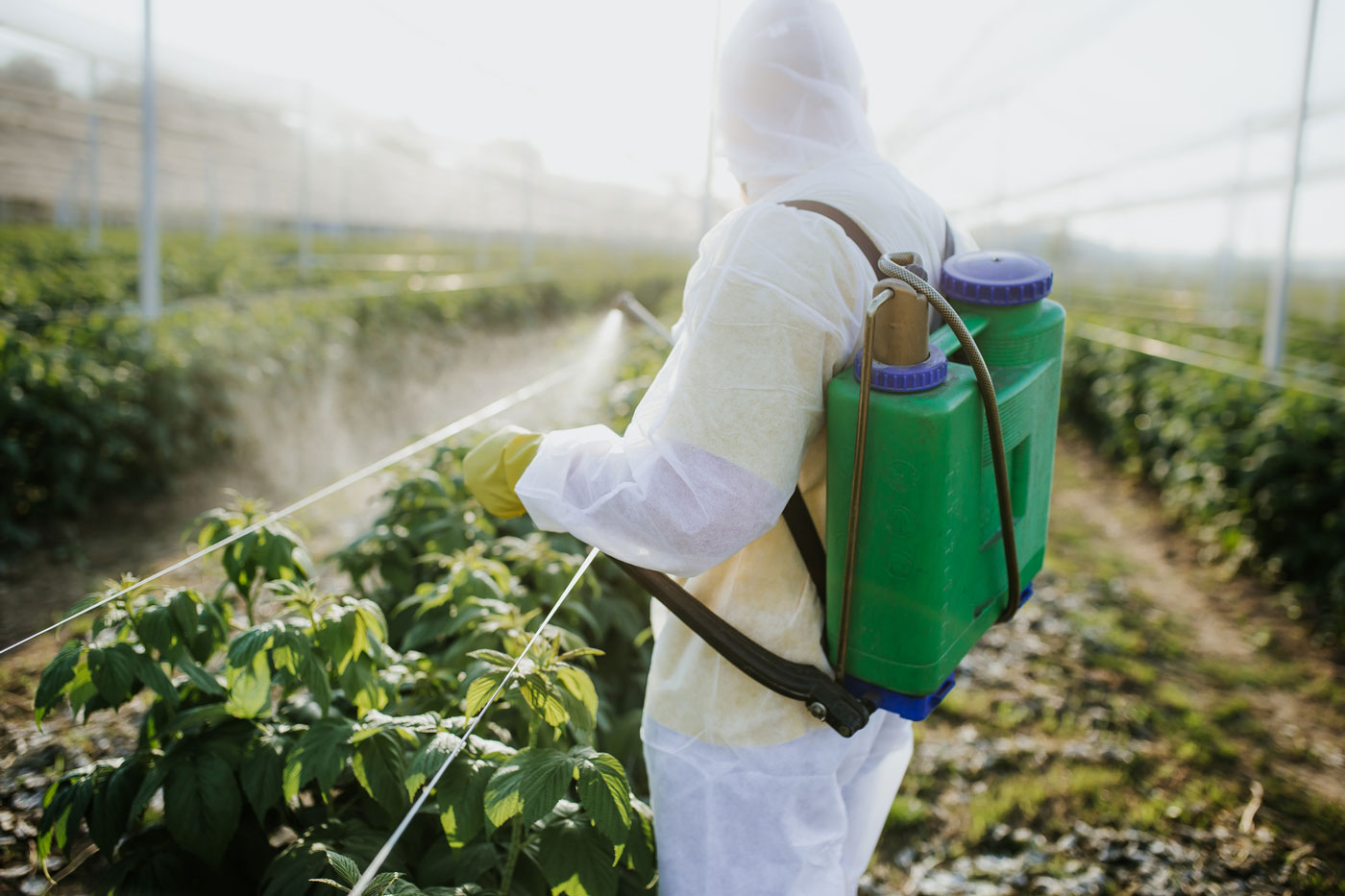
Oh, that potato! Originally from Peru, the potato has crossed oceans and ended up in every part of the globe.
Only two things in this world are too serious to be jested on, potatoes and matrimony.
—Irish saying.
Now, they are genetically engineered. And they are part of the monoculture that triggered the Great Famine, also called the Irish Potato Famine. Then, the Irish used a single breed of potato, the Irish Lumper, which was vulnerable to fungus that the breed had no resistance to. However, the Peruvians grow many hundreds of varieties. That diversity of breed/varieties is what keeps a single fungus or other pests from decimating a food stock.
The problems with “conventional” potatoes are tied to the fact the soil is so eroded and decimated in industrial growing models that there is no natural fungi and bacteria, so ungodly amounts of chemical fertilizers have to be applied each season, more and more each season, that is. Again, in the USA, only several varieties of potatoes are grown.
But it’s the pesticides, man! Leave my spuds alone.
The the USDA’s Pesticide Data Program determined 35 different pesticides have been found on “conventionally-grown” (nonorganic) potatoes.
As is true of many of the plastic compounds, these pesticides have some lethal side effects:
– 6 are known or probably carcinogens
– 12 are suspected hormone disruptors
– 7 are neurotoxins
– 6 are developmental or reproductive toxins
One herbicide, chlorpropham, is used to stop the growth of weeds and to inhibit potatoes sprouting; it’s found on up to 80 percent of all “conventionally-grown” potatoes.
According to the Extension Toxicology Network, this poison is toxic to honey bees. In labs, tests bare out the effects of chronic exposure to the herbicide: animals show “retarded growth, increased liver, kidney and spleen weights, congestion of the spleen, and death.”

It’s systems thinking that is lacking in the full portrait of industrial farming and how agribusiness thinks and works, yet holistic (systems thinking) approaches are utilized and integrated into true objective research (mostly by environmental safety and advocating groups) on the benefits, harms, and unintended consequences of this chemicalized world — sometimes we can only work on one chemical at a time, which takes many human lifetimes to drill down into to determine the cradle to cradle impacts of those compounds, the chemicals. The alternative to this entire agribusiness industrial model is actually to go back to the start of good farming. Agroecology is the way to go, according to many groups I have been a part of and interviewed as a journalist. This is the only way to make it through the heating planet, and all the issues tied to soil degradation and productivity falling, droughts, and, well, ocean inundation and changed water cycles throughout the globe. Agroecology, a harmonious system of saving the planet and feeding the people with no genetically engineered “foods” and vegetables and fruits sprayed with toxins. This continues what Benyus states above and ramified here:
Biomimicry offers an empathetic, interconnected understanding of how life works and ultimately where we fit in. It is a practice that learns from and mimics the strategies used by species alive today. The goal is to create products, processes, and policies — new ways of living — that solve our greatest design challenges sustainably and in solidarity with all life on earth. We can use biomimicry to not only learn from nature’s wisdom, but also heal ourselves — and this planet — in the process. — Benyus.

All those poisons, then, are integrated into the spud, since, as a root vegetable, potatoes absorb all of the pesticides, herbicides, and insecticides sprayed above the ground which eventually spread into the soil.
There are many insider testimonies from potato farmers — Jeff Moyer, CEO at the Rodale Institute and former chair of the National Organic Standards Board, says:
I’ve talked with potato growers who say point-blank they would never eat the potatoes they sell. They have separate plots where they grow potatoes for themselves without all the chemicals.
The potato is a great example of an industrial system gone crazy. Terms like Frankenfoods, fishy tomatoes and assassin seeds are not benign. Imagine, the now defunct DNA Plant Technology of Oakland, California developed the gene therapy (sic) of inserting a fish gene into a tomato. It was the genes that helps a flounder survive in frigid waters. This “anti-freeze” fish gene was spliced into tomato cells to enhance the plant’s resistance to cold.
Monsanto developed the gene technology to create suicide seeds, of all wonderfully bad things: They call it Genetic use restriction technology (GURT), but it’s more commonly referred to as terminator technology or suicide seeds. This keeps farmers from saving seeds from Monsanto crop, as the genetic alterations either activate or deactivate) some genes only in response to certain stimuli. That second generation of seeds is infertile.
That Roundup (Monsanto) is what is sprayed all over our Oregon forests when clear cuts raze stands of trees – to keep opportunistic and invasive brush and other tree species, from overtaking the sawed over hills and valleys.

The history and politics are not lost on people like my Chilean friend — Dow Chemical and Monsanto were the two largest producers of Agent Orange, a fifty-fifty mix of the n-butyl esters 2,4-dichlorophenoxyacetic acid (2,4-D) and 2,4,5-trichlorophenoxyacetic acid (2,4,5-T).
I’ve worked with military veterans exposed to Agent Orange, and worked with offspring of American veterans who were exposed.
Birth Defects Associated with Female Vietnam Veterans
- Achondroplasia.
- Cleft lip and cleft palate.
- Congenital heart disease.
- Congenital talipes equinovarus (clubfoot)
- Esophageal and intestinal atresia.
- Hallerman-Streiff syndrome.
- Hip dysplasia.
- Hirschsprung’s disease (congenital megacolon)
I’ve been to Vietnam and interviewed people working on the long-term and multi-generational effects of all of that defoliant sprayed on citizens of Vietnam, Laos, Cambodia.
I reviewed a recent documentary, The People vs. Agent Orange – “Eternal Impunity of Capitalism’s Crimes”
Dr. James Clary was with the Air Force in Vietnam, which ran the program. He was ordered to dump the computer and erase all memory. Instead, he printed out a stack of documents two feet high – missions, sorties, coordinates, dates, gallons dropped throughout all of Southeast Asia and Laos.
“We had the information coming from Dow that there were real problems for people associated with this chemical. It was all locked up for 35 years.”
Playing down all the negative effects of this chemical was part of the Dow plan. Dioxin was the byproduct in the brew. Dow told the US government they were having difficulty producing the volume of the chemical the US wanted. The government told them to not worry about safety standards and quality control, and that a fast production process which produced more of the dioxin would not matter, since the crops and forest were being sprayed, and if people got in contact with it, the idea coming from both industrialists at Dow and those in government and the military was, “Hey, so what, this is a war . . . these are the effing Vietnamese.”
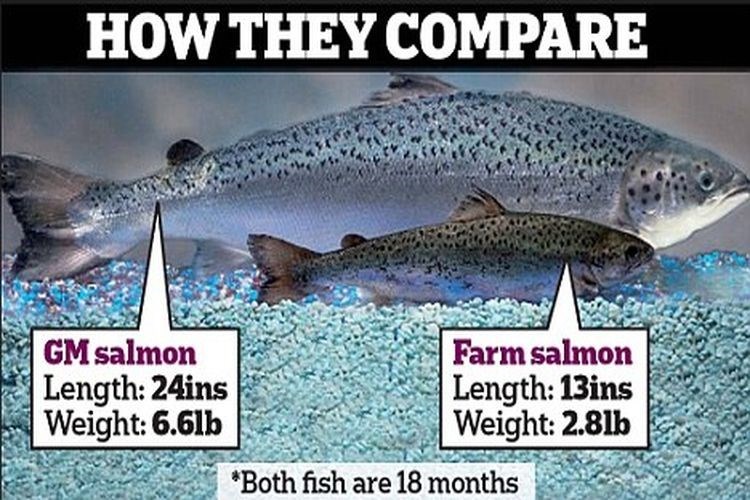
The idea for this environmental series is that walk along the wrack line, for sure, which has for me the past two years conjured up all sorts of topics that are worthy of many books. It is a simple walk I conduct on a calm (mostly) sandy and driftwood-strewn beach in Central Oregon. But that solitude allows some of my own decades studying environmental harms to both animals and plants to filter through my thoughts. For this short essay, it is that potato, which is still not the most sprayed crop in the industrial system.
There are many groups looking into industrial vegetables and fruits, but they all have their own very similar Dirty Dozen – These foods should be purchased organic if possible.
- Apples – at least 99 % have residue
- Strawberries – contained 13 different pesticides each
- Grapes — contained 15 different pesticides
- Celery — 13 different pesticides per sample
- Peaches
- Spinach
- Sweet Bell Peppers
- Imported Nectarines – every sample tested positive for pesticides
- Cucumbers
- Cherry Tomatoes – contained 13 different pesticides each
- Imported Snap Peas – contained 13 different pesticides each
- Potatoes – had more pesticides by weight than any other food
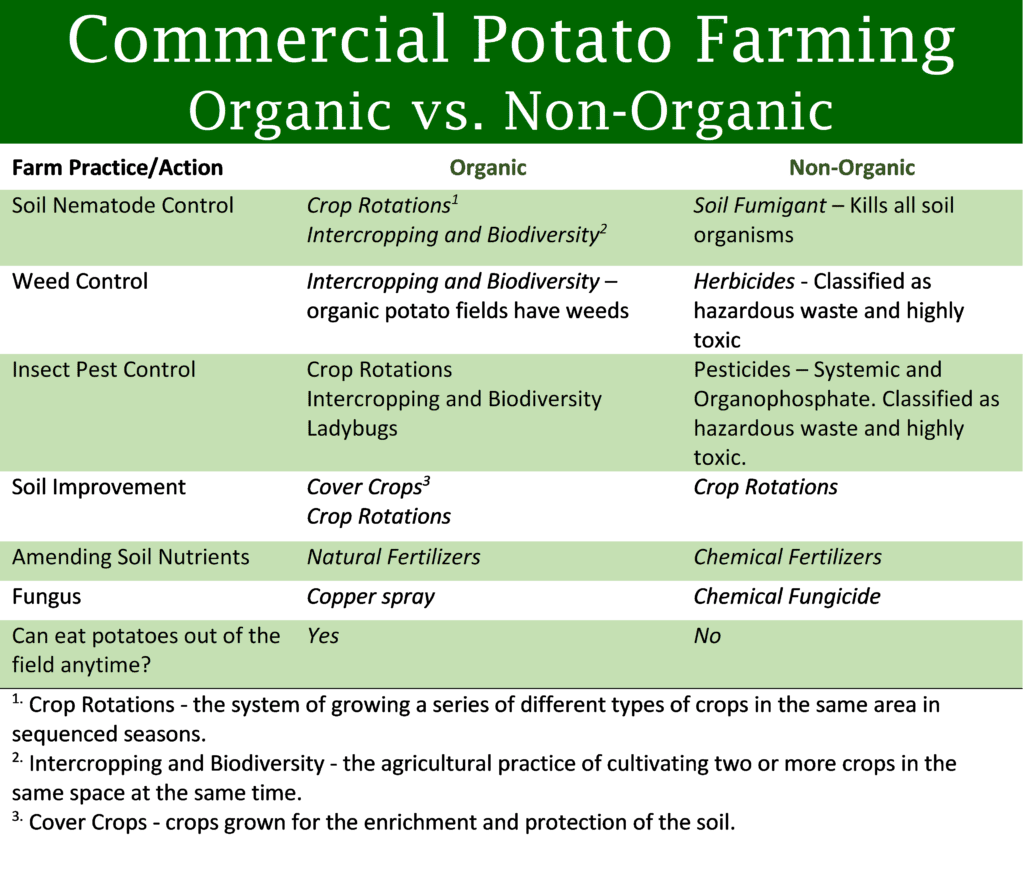
We go from one chemical exposure – PFAS which is more generally known as flame retardant, and then we go to one or two common chemicals used in our food system – Roundup (glyphosate) and Atrazine – and we are not even scratching the tip of the iceberg in terms of global pesticide use, which is in the billions of pounds yearly, accounting for hundreds and thousands of different types of Herbicides/PGR Insecticides; Fungicides; Fumigants.
Remember, there are literally dozens of active ingredients in one type of herbicide. There are hundreds and sometimes thousands of chemicals in a scoop or pint of poison used in industrial ag. There are no studies on how all those interact with each other as they bioaccumulate and end up as part of the war against the human biome.
For one of the most common herbicides, atrazine (ATR), and its persistence in the environment has resulted in documented human exposure.
Alterations in hypothalamic catecholamines have been suggested as the mechanistic basis of the toxicity of ATR to hormonal systems in females and the reproductive tract in males. Because multiple catecholamine systems are present in the brain, however, ATR could have far broader effects than are currently understood. Catecholaminergic systems such as the two major long-length dopaminergic tracts of the central nervous system play key roles in mediating a wide array of critical behavioral functions. In this study we examined the hypothesis that ATR would adversely affect these brain dopaminergic systems. Male rats chronically exposed to 5 or 10 mg/kg ATR in the diet for 6 months exhibited persistent hyperactivity and altered behavioral responsivity to amphetamine. Source.
There are many warriors in this battle to stop the war against nature, the war against Homo Sapiens. UK’s Dr. Rosemary Mason, a retired physician and health and environmental campaigner, is one of hundreds of gutsy go-to thinkers who is pulling away the blinders and cutting through the PR spin. In addition, the Institute for Responsible Technology claims that cancers caused by Roundup include non-Hodgkin’s lymphoma, bone cancer, colon cancer, kidney cancer, liver cancer, melanoma, pancreatic cancer and thyroid cancer.
Mason also quotes Robert F. Kennedy Jr, the renowned environmental attorney, who in 2018 talked of:
… cascading scientific evidence linking glyphosate to a constellation of other injuries that have become prevalent since its introduction, including obesity, depression, Alzheimer’s, ADHD, autism, multiple sclerosis, Parkinson’s, kidney disease, and inflammatory bowel disease, brain, breast and prostate cancer, miscarriage, birth defects and declining sperm counts. Strong science suggests glyphosate is the culprit in the exploding epidemics of celiac disease, colitis, gluten sensitivities, diabetes and non-alcoholic liver cancer which, for the first time, is attacking children as young as 10.
All these injuries and diseases are covered here, at Hormones Matter.
As a capstone to this piece, it is both a testament to Rachel Carson’s work, Silent Spring, as she is considered the mother of the environmental movement. She was vilified, and her book on poisons, Silent Spring, is poetic, clear, and was published in 1962, after four years of work writing it ( her lifetime of thinking and honoring nature, that is). She was one of thousands studying at the time the world’s most dangerous pesticide, DDT.

Appearing on a CBS documentary about Silent Spring shortly before her death from breast cancer in 1964, she remarked, “Man’s attitude toward nature is today critically important simply because we have now acquired a fateful power to alter and destroy nature. But man is a part of nature, and his war against nature is inevitably a war against himself? [We are] challenged as mankind has never been challenged before to prove our maturity and our mastery, not of nature, but of ourselves.”

Unlike most pesticides at the time, whose effectiveness was supposedly limited to destroying one or two types of insects (though we now know that is basically not true), DDT was capable of killing hundreds of different kinds at once.
Nature writer Edwin Way Teale, warned, “A spray as indiscriminate as DDT can upset the economy of nature as much as a revolution upsets social economy. Ninety percent of all insects are good, and if they are killed, things go out of kilter right away.”
More than 75 years after Way Teale’s warnings, we are seeing the devastating effects again of DDT. On the ocean floor, near Catalina Island. Leaving Hormones Matter readers with yet another huge gash in their hearts concerning the ill effects of this industrialized agriculture has on future generations, of both Homo Sapiens and all the other species, is possibly yet another trigger warning when reading my articles. However, this is the fabric of my own cloth looking at this all as a systems thinker.
High concentrations of DDT (dichlorodiphenyltrichloroethane, an insecticide that was widely used for pest control during the 1940s and 1950s) were previously detected in ocean sediments between the Los Angeles coast and Catalina Island, in 2011 and 2013. At the time, scientists who searched the seafloor in the area identified 60 barrels (possibly containing DDT or other waste) and found DDT contamination in sediments, but the full extent of the area’s contamination was unknown.
Now, a research expedition presents a clearer picture of the deep-sea dump site. Their findings reveal a stretch of ocean bottom studded with at least 27,000 industrial waste barrels — and possibly as many as 100,000, researchers with Scripps Institution of Oceanography at the University of California said in a statement. Live Science.
Read more?
“Monsanto Manipulates Science” from Food and Water Watch
“Organophosphates: A Common but Deadly Pesticide” from Cornucopia
Beyond Pesticides
Pesticides Industry: Sales and Usage by EPA
“Pest-Chemgrids” from Nature
This content originally appeared on Dissident Voice and was authored by Paul Haeder.
Paul Haeder | Radio Free (2021-05-07T06:46:13+00:00) The Good, Bad and the Ugly of Roughshod Chemistry. Retrieved from https://www.radiofree.org/2021/05/07/the-good-bad-and-the-ugly-of-roughshod-chemistry-2/
Please log in to upload a file.
There are no updates yet.
Click the Upload button above to add an update.
